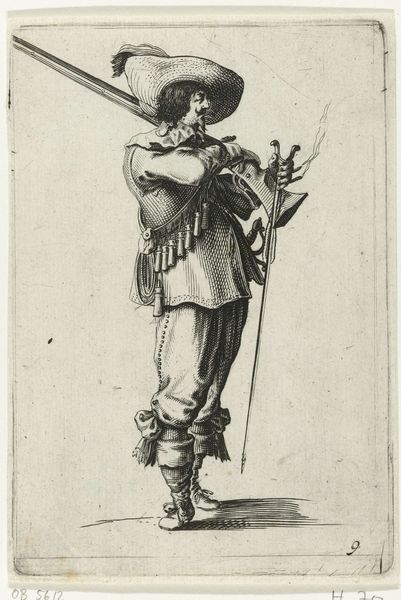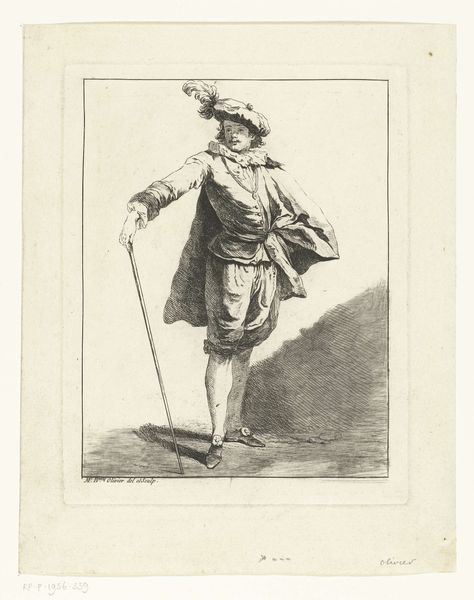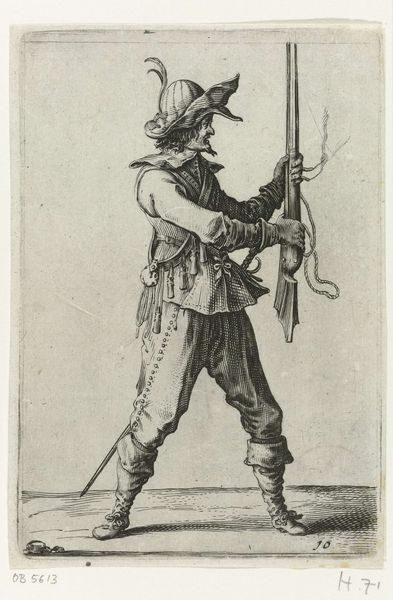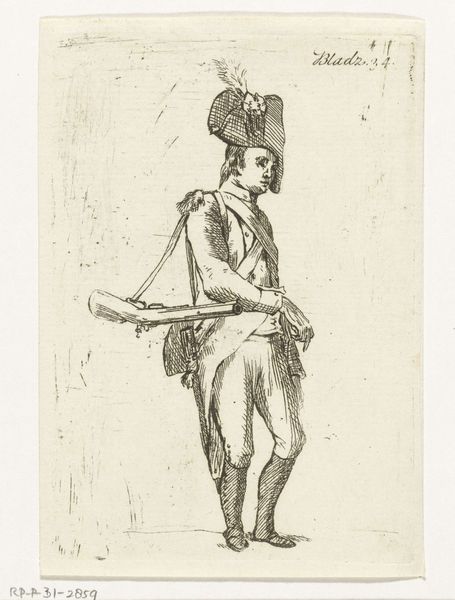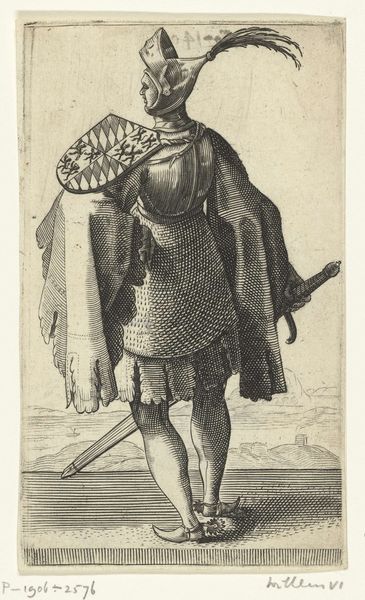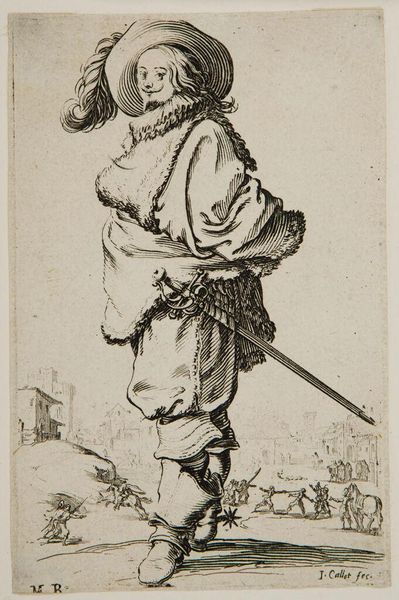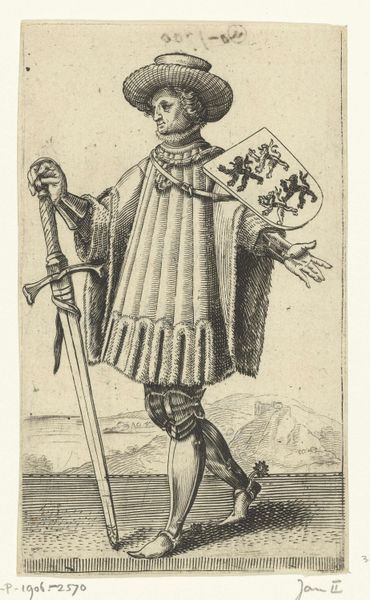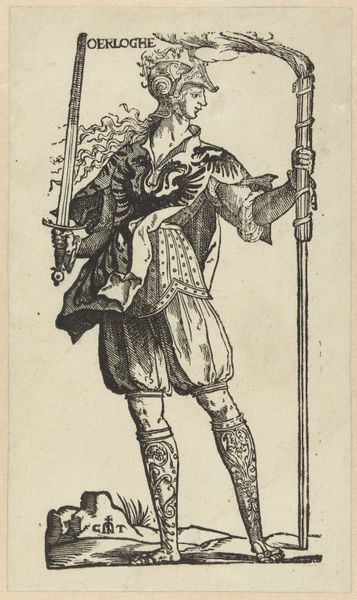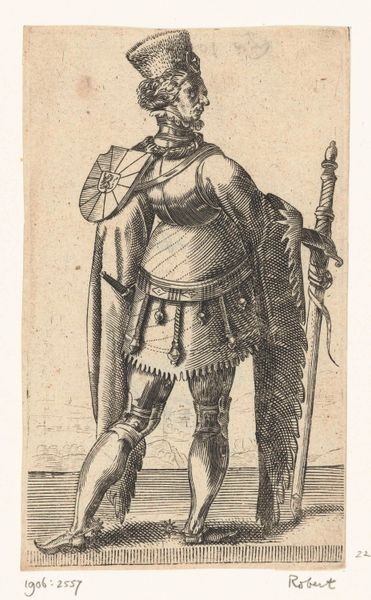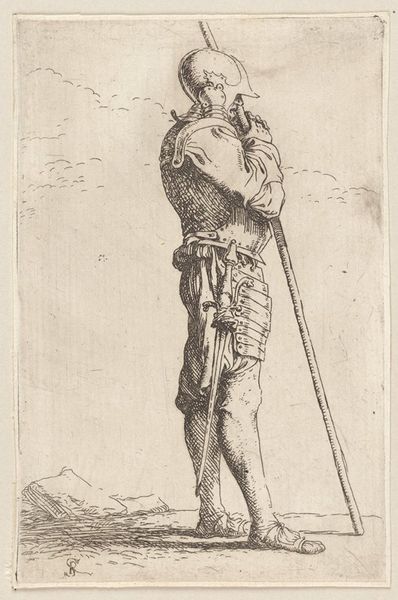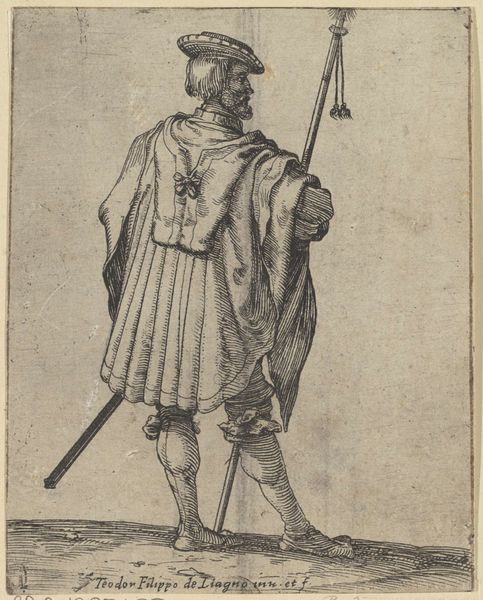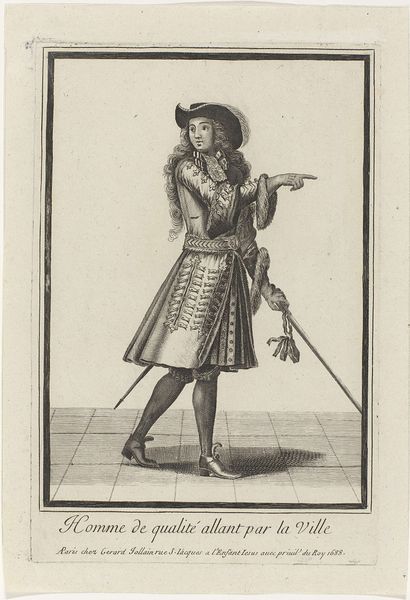
Staande soldaat met musket over de schouder en geweerhouder in de rechterhand 1630 - 1665
0:00
0:00
salomonsavery
Rijksmuseum
drawing, pen, engraving
#
portrait
#
drawing
#
weapon
#
baroque
#
dutch-golden-age
#
figuration
#
pen-ink sketch
#
line
#
pen
#
history-painting
#
engraving
Dimensions: height 147 mm, width 101 mm
Copyright: Rijks Museum: Open Domain
Editor: Here we have "Standing Soldier with Musket over his Shoulder and Gun Rest in his Right Hand," a pen and ink drawing by Salomon Savery, dating sometime between 1630 and 1665. It’s… striking. He seems almost nonchalant despite carrying a musket and sword. What stands out to you in this piece? Curator: Well, seeing this now, I immediately think about the representation of power, particularly in the Dutch Golden Age. Notice how his elaborate attire and confident stance contribute to the construction of a powerful identity. It prompts me to consider: what ideologies are embedded in images of military figures, and how did those intersect with gender, class, and race during that period? How does the sketch invite or resist those narratives? Editor: I hadn’t considered how staged his “nonchalance” is! So, this image isn't just a portrait, it's making a statement? Curator: Exactly! It makes you wonder who this man is performing for. Are we, as viewers, implicated in reinforcing the social hierarchy he represents? Moreover, what is Savery, the artist, attempting to convey? It appears as a study of a type, a tool for the artist. I can see both, an anonymous cog and an individual who could alter his own world. Editor: It's interesting to view this as less a depiction of war, and more an articulation of power structures and performance. Curator: Precisely! And considering this was made during a time of significant social upheaval, how do you think an image like this might have functioned to either solidify or challenge existing social norms? What could the intended audience see and what would those without influence, perhaps a colonialized population, experience? Editor: That adds a completely different dimension to my understanding. I was initially focused on the individual soldier, but now I see a broader statement about society and its values. Curator: Exactly! And remember, art is never created in a vacuum. It's a product of its time and place, reflecting and shaping the social and political landscape. Editor: I’m definitely going to look at art of this period differently now. Thanks!
Comments
No comments
Be the first to comment and join the conversation on the ultimate creative platform.
